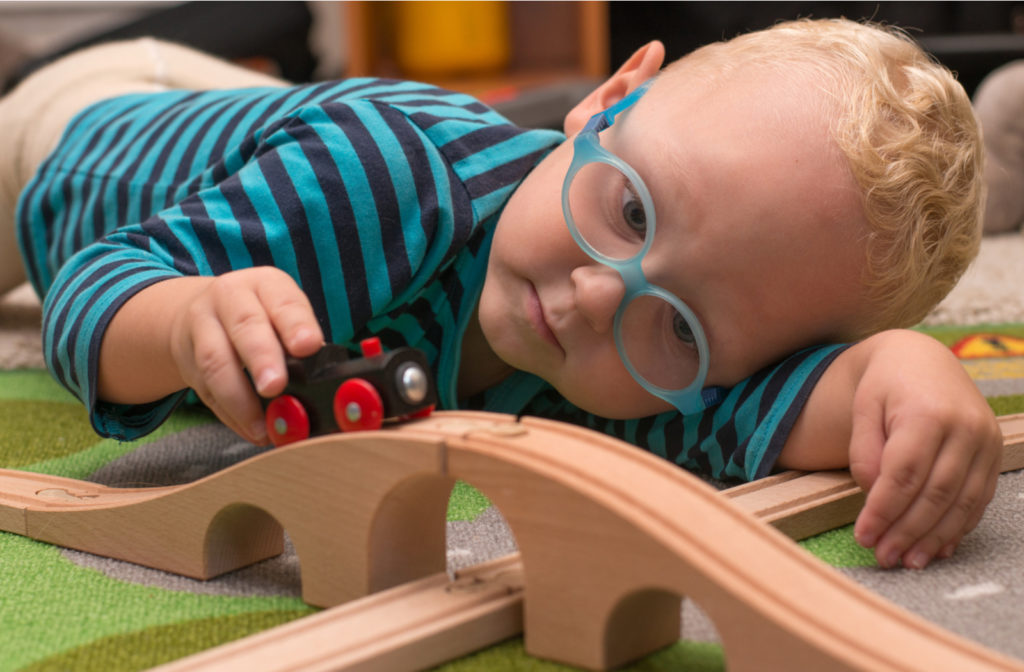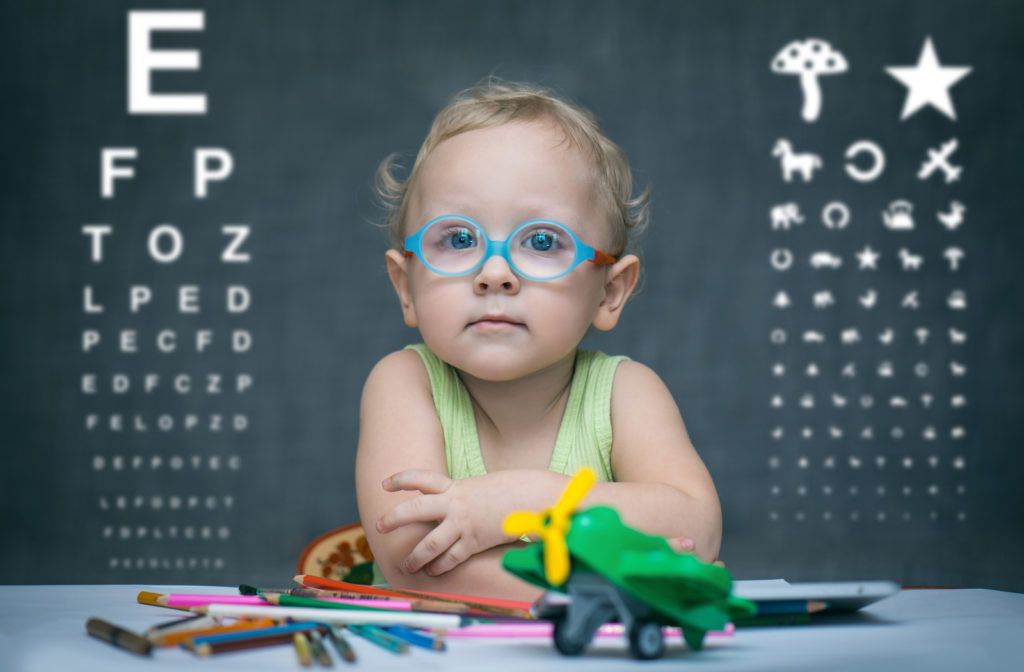Your child’s vision plays a critical role in how they grow and develop. From interacting with the environment around them to learning to read and write, having healthy eyes and good vision is crucial.
That’s why it’s important to understand how your child’s eyes are supposed to develop so you can make sure your child is on the right track.
Eye diseases and conditions are common and often present in childhood. Booking regular eye exams for your child is an important step in ensuring that your child’s eyes are healthy and their vision is developing properly!
Infants
At birth, an infant’s visual system isn’t fully developed and rapidly improves during their first year of life. The following three stages are a rough outline of what you can expect from your child as their visual system develops.
Birth to 4 months
- At birth, infants are born with the ability to see color but can’t easily tell the difference between two targets or images
- An infant can only focus on objects and images about 8 to 10 inches away from their eyes
- At around 8 weeks, an infant may begin to focus their eyes on faces and moving objects for a short period of time
- An infant’s eyes are not well coordinated and their muscles may be weak. This can cause eyes to wander or cross, which is completely normal unless excessive
- At around 3 months, hand-eye coordination begins to develop and the infant may start tracking and reaching for objects
5 to 8 months
- During these months, muscle control, eye-body coordination, and depth perception skills will start to improve
- You should notice that your child’s eyes wander less and they can accurately reach for and attempt to grasp objects
- Your baby can recognize faces and objects
9 to 12 months
- When your baby begins to stand and walk, it significantly affects their eye-body coordination as they learn to move through the world they can see around them
- By 10 months of age, this eye-body coordination should reach a level where they are able to grasp objects with their thumb and forefinger
- By 12 months, an infant can judge distance and move objects with precision

Toddlers & Preschoolers
After the first year, a child’s eye-hand coordination and depth perception should be well developed.
- During the ages of 1-3, your child’s eye muscles gain strength, and the connections between nerves multiply
- They recognize familiar objects and images and can use objects with a purpose
- Activities that focus on eye-body coordination can further help develop their eye teaming and depth perception
- By age three, most children have developed basic language and motor skills, allowing them to engage in a vision test during an eye exam
School-aged Children
After age 5, your child has complete depth-perception and vision ability, considering their eyes are healthy. This means that your child can begin to use their vision to read and comprehend.
Much of your child’s learning is through their visual system. Your child needs the following vision skills for effective classroom learning:
- Visual acuity- the ability to see clearly in the distance
- Eye focusing- the ability to maintain clear vision as the distance of an object or image changes
- Eye tracking- the ability to keep the eyes on target when looking from one object to another or as an object moves
- Eye teaming- the ability to use both eyes together
- Eye-body coordination- the ability to pair visual information and physical action
When your child starts school, it is a sign that they are ready to have their eyes examined regularly. You should book an appointment to have their eyes examined annually or as recommended by their eye doctor.
Common Vision Problems in Children
Common vision problems that often present in childhood are:
- Amblyopia or “lazy eye” occurs when one eye is weaker than the other causing misalignment
- Refractive errors such as nearsightedness or farsightedness affect your child’s ability to see objects at a certain distance, resulting in blurred vision
- Strabismus or “crossed-eyes” is usually caused by eye muscle weakness and results in the eyes failing to point in the same direction
- Developmental abnormalities develop when your child is a fetus and can result in vision loss
Signs & Symptoms
If your child is experiencing any of the following symptoms, they may be suffering from a vision problem:
- Excessive eye rubbing or blinking
- Watery eyes
- Trouble concentrating on tasks
- Avoiding close-sight activities
- Complaints of eye pain or headaches
- Covering one eye or tilting the head to see
- Holding objects close to the face
- Misaligned eyes
- Complaints of blurry vision or seeing double
When to Call Your Doctor
If your child is displaying signs of vision problems based on the symptoms previously listed, it is a good idea to have their eyes examined by their eye doctor. Their eye doctor will assess the health of their eyes, check for eye conditions, and, if necessary, outline a treatment plan to help improve your child’s eye health.



